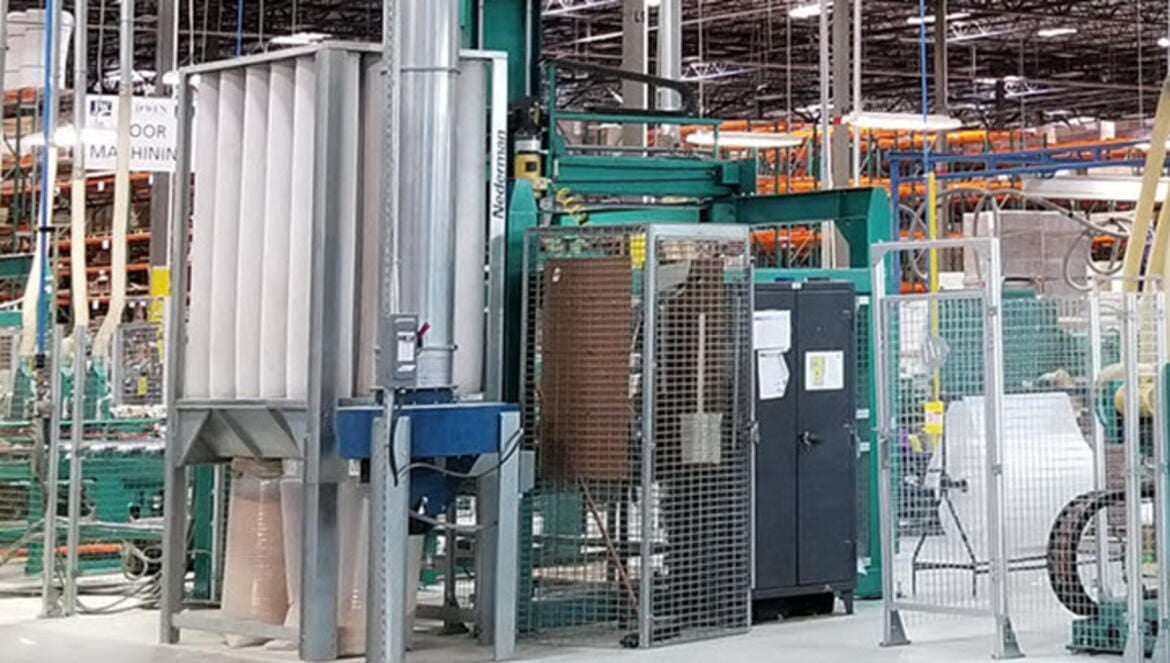
Combustible dust particulates from manufacturing processes need to be collected and filtered for the safety of the facility and in accordance with relevant standards and regulations. NFPA standards permit the use of enclosureless dust collectors based upon specific criteria that differ depending on the application type.
 Manufacturing processes that create combustible dust particulates require them to be collected and filtered for the safety of the facility and in accordance with relevant combustible dust standards and fire prevention regulations. However, serious precautions need to be taken during the process of collecting and storing these particulates, since the process may lead to explosions and fires.
Manufacturing processes that create combustible dust particulates require them to be collected and filtered for the safety of the facility and in accordance with relevant combustible dust standards and fire prevention regulations. However, serious precautions need to be taken during the process of collecting and storing these particulates, since the process may lead to explosions and fires.
Applications generating large amounts of dust, high airflow requirements and/or contaminants with highly explosive characteristics require a robust filtration solution with appropriate safety equipment including isolation valves, explosion vent devices, monitoring devices, and many others. These systems can be quite complex and, in some cases, require a significant investment.
However, some less demanding indoor applications, especially within the woodworking industry, have another option referred to as “Enclosureless Dust Collectors” that can deliver adequate filtration performance, comply with combustible dust regulations, and reduce the financial burden associated with larger systems. While these systems may be simpler and less expensive, it is critical to consider the application and operation requirements outlined within the National Fire Protection Association (NFPA) combustible dust standards.
Under NFPA 660:2025, the requirements from two formerly separate standards, NFPA 664 (focused on wood processing and woodworking facilities) and NFPA 654 (covering a wide range of combustible dust applications not addressed by other standards) are now consolidated. Importantly, the requirements for enclosureless dust collectors remain unchanged. The combined standard still prohibits enclosureless units unless otherwise specified in the commodity chapters. Under NFPA 660:2025, the primary requirements for enclosureless dust collectors include:
In addition to the requirements above, NFPA 660 Chapter 25 adds more specific limitations and requirements for non-wood combustible dust applications :
Because of this weight limit, enclosureless collectors in non-wood applications may be suitable only for light-duty, low-density dusts. Processes producing larger volumes of dust often require a more traditional enclosed dust collector system.
A Dust Hazard Analysis (DHA) is essential for deciding if an enclosureless collector is suitable for a particular application. It was once required by NFPA 652 but is now included in NFPA 660, Chapter 7. There are also specific commodity requirements: for wood in Chapter 24.7 and for non-wood in Chapter 25.7. This analysis includes identifying the dust’s properties such as Kst, Pmax, MIE and MEC, as well as any operational constraints that could affect compliance with NFPA 660.
The S-Series collectors are designed and manufactured as an efficient solution for a wide range of applications, but the owner/operator carries the complete responsibility to understand and perform the necessary requirements for NFPA compliance. The limitations need to be evaluated comprehensively and alternative solutions should be considered as well.
Nederman is a global leader in dust collection solutions with a proven track record of over 10,000 S-Series installations globally. Learn more about the Nederman S-Series collectors here.
Contact our combustible dust experts to ensure a properly designed solution for your wood dust collection needs.
We have extensive experience of various challenges in the different industries and our experts are very skilled, helpful and professional. With us, you can feel secure that we take care of you and your needs. You are always welcome to contact us regardless if you have a short question or a more complex and complicated one. A warm welcome to Nederman.
Contact us here